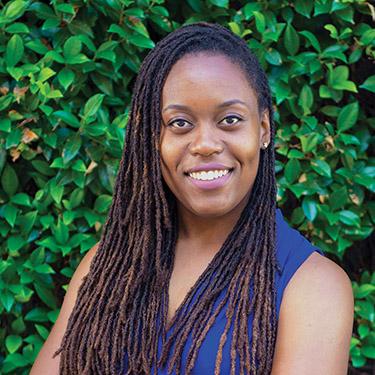The Different Faces of Blackness
It is important to contemplate our existence outside of the white gaze.
It was not my first time on American soil when I stepped foot on Bryn Mawr College’s campus in August 2010. I have been traveling to the U.S. since I was born.
The first overtly racist experience I had was in a Verizon store in Oneida, New York, in the summer of 2004. Coming from a country that prided itself on “Out of Many, One People,” it was the very first time I felt othered. Of course, I knew I was Black, but it is an entirely different thing to be Black in the presence of whiteness. The store clerk had his poodle unleashed in the store. When my father asked for the dog to be leashed (since I was still harboring a childhood fear of dogs), he was greeted with, “You lot are no better than my dog. You are the ones who should be leashed. If you don’t like it, you can leave.” My dad stood there paralyzed by anger but also weighing his options as a Black man who is not a citizen and as a father who wants to protect his child. We left wordlessly, but I could see how irate my father was. I don’t think I processed this at the time. I was more afraid of the dog. That is a privilege. A 13-year-old who had lived their entire life in America would’ve been more fearful of the man than the dog.
So, you would think I would have been completely race-aware by the time I came to live here for school as a young adult. However, nothing really could compare to the experience of what it means to be Black in America. The racial violence had to be lived really to be understood. The many stresses 2020 placed on the U.S. brought that to a head. However, this was not all I learned about being Black in America. It is important to contemplate our existence outside of the white gaze.
At Bryn Mawr, I confronted what I realized was some sort of tension between Black Americans and the greater African Diaspora. I found myself being drawn to members of BACaSO (Bryn Mawr African and Caribbean Student Organization) due to perceived cultural similarities between our upbringings. The food, the struggles of our societies and their governance, similar proverbs and sayings, and similar histories. I definitely listened and related more to Afrobeats than to hip-hop. Parties here still feel foreign.
When you look closer though, we loved and participated in each other’s traditions, and we bonded over the cultural exchanges of food, music, and especially dance. The path to social mobility for many is through education. Whether trying to climb out of and change the oppressive system you were born to or leaving your homeland in search of more opportunities, we came to Bryn Mawr and enriched it. We did so by existing in that historically and still primarily white space.
Blackness is not monolithic, and I love that we had BACaSO and Sisterhood* [asterisk denotes that Sisterhood* is open to all genders and gender expressions] at Bryn Mawr. I loved that we worked together and supported each other, but we represented different faces of Blackness. This diversity in Blackness requires diverse approaches to ensure all Black Lives Matter. The policies we now create must reflect this diversity across the board, especially in education. With a vice president who was born of immigrants and was bussed to school, now is the time to advocate for the policies that can conceptualize and capture our diversity.
This issue of the Alumnae Bulletin presents reflections from Black alumnae/i and students spanning 65 years in the life of the College.
Published on: 03/24/2021
